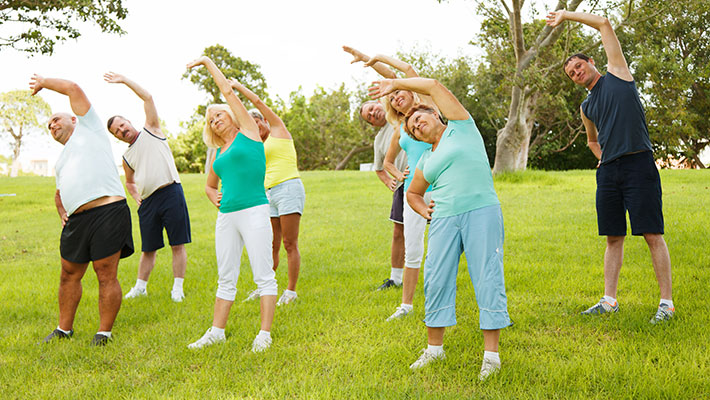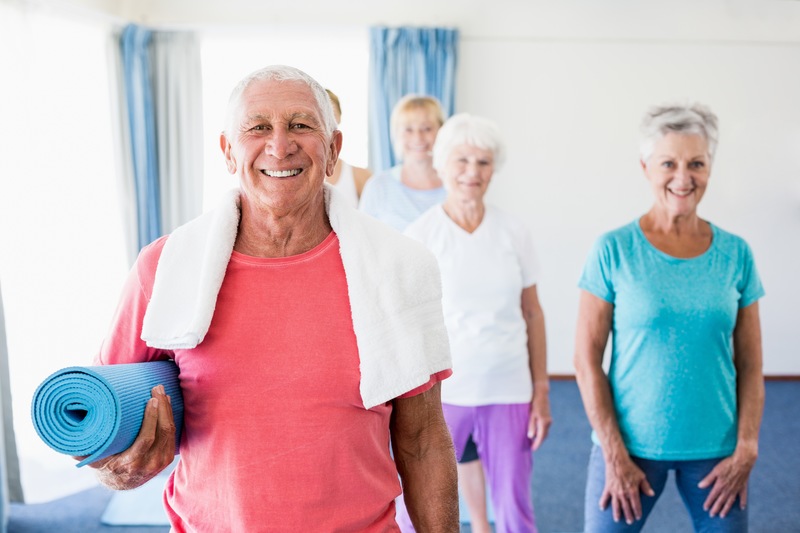 |
| A Paradise for Parents Surprise & Goodyear AZ 623-295-9890 |
Without a strong core, you will be more prone to poor balance and limited mobility because all of your movements are generated from the core. This means that if the core is weak, other muscles of your body need to work twice as hard to catch up. For this reason, seniors are more prone to injuries. However, it’s never too late for your elderly loved one to change their lifestyle and develop core strength.
Benefits of Core Strength Exercises
One of the many benefits of exercise is that it’s proven to slow down the process of aging. Adding core exercises to your elderly loved one’s workout routine is essential for their overall health. It improves their stability, coordination, stamina, posture, stability, and prevents injuries. Here are other benefits your loved one will get from core exercises:- Prevent injuries: Since seniors are prone to injuries, it’s important to prevent them in the first place. Core exercises can help you do just that by improving strength and flexibility.
- Improve balance and stability: The spine helps improve balance and stability. A strong core helps your loved one’s body to properly support the spine. In turn, they will have a stronger sense of center of gravity, keeping their balance and allows them to become more confident in their movement.
- Develop bodily strength: Studies show that a strong core greatly improves body strength in older adults by over 30%.
- Daily tasks are easier to do: Without a strong core, your loved one will have difficulty in doing simple tasks, such as getting up from a sitting position, bending down to tie shoelaces, or even walking. Developing core strength makes it easier for your loved one to perform daily activities and improves reaction time.
- Reduce pain: Seniors are prone to suffer from lower back pain. Core exercises aids in stimulating these muscles by stretching them and strengthening them, therefore reducing the pain they feel from these chronic conditions.
 |
| A Paradise for Parents Surprise & Goodyear AZ 623-295-9890 |
Disclaimer: Before starting any type of exercise, especially core exercise for seniors, make sure to consult with your doctor or your healthcare provider to determine whether the exercise is right for your health needs and level of fitness.
5 Great Core Exercises for Seniors
1. Wood Chops
Wood chops is a type of exercise that hits almost every muscle in the core. Plus, it also challenges your balance. This exercise is super simple since it’s very similar to a task most of us do on a daily basis: loading and unloading the dishwasher.- Hold your hands together in front of you while your feet are a bit wider than your shoulders.
- Raise your arms to the left side of your head.
- Properly squat down as you do a chopping motion of your arms diagonally towards the opposite side of your body. Keep your core tight as you do so.
- Repeat the chopping motion back to the top.
- Do at least 10 reps and then switch to the other side.
2. Side Bends
This exercise targets your oblique muscles that are located along the sides of your trunk. These muscles assist in bending sideways and rotation of the body. Side bends are a great way to strengthen the oblique muscles improve range of motion.- Sit on a sturdy chair with your feet flat on the floor.
- Put your right hand on the back of your head and the left arm outstretched to one side.
- Mimic the motion of reaching toward the floor by leaning over to your side.
- As you bend over, tighten your oblique muscles then return to initial position.
- Remember not to let your chest fall forward. As you do the exercise, keep your feet flat on the floor.
- Repeat for at least five times on every side.
3. Pelvic Tilts
The pelvis is located by your lower abdomen. It’s important to strengthen these muscles as it supports the torso and the pelvis. Pelvic tilts are one of the best ways to do so since it stimulates and strengthens your lower abdominals.- Sit on a sturdy chair and keep your back straight as you put your hand on your thighs.
- Take a deep breath and then exhale as you draw your navel into the spine – hollowing your belly and tucking in your tailbone.
- Inhale deeply to release back to starting position.
- Repeat for about 10-12 times.
4. Chair Planks
Planks develop the muscles found deep in your core that’s not easily targeted by other exercises. It’s one of the best abdominal exercises for seniors since it strengthens and stabilizes the traverse abdominal muscles. However, you would have to learn how to engage these muscles by drawing in the belly button. Plus, it also helps with posture.- Put a sturdy chair against a wall facing you. Make sure to keep other furniture and object away from you to avoid any injury.
- As you face the chair, stand straight and place the heels of your hands on the edge of the seat – by the front legs on both corners.
- Hold that position and take a few steps back until your head, shoulders, hips, and feet form a long line.
- Make sure you are comfortable with the distance between your feet and the chair, so you can hold the position comfortably while maintaining the proper position.
- Squeeze your heels together and ensure that your hands and shoulders are aligned straightly.
- Stay in this position for 30 or as long as you can. Concentrate on tightening your core by drawing your belly button towards the spine. Do this exercise for three to five repetitions.
5. Superman
The superman exercise develops your lower and upper back, as well as your glute muscles. This helps you to easily perform movements, such as bending over or sitting. It’s better for seniors to slowly ease into this exercise by lifting one arm and the opposite leg before they gradually lift both arms and legs.- Grab a yoga mat or a regular mat for cushion. Place it flat on the floor and lie face-down.
- Place your outstretched arms in front of you and then lift the left arm together with your head and right leg. Around two inches from the floor would be good.
- As you slowly raise your leg, make sure to squeeze your glute muscles, so you alleviate the pressure you feel on your lower back and tighten your core.
- Return to starting position and repeat the process on the opposite side.
- Repeat five times on every side.
A Paradise for Parents knows that it is very important to stay physically fit and healthy especially in our golden years. Our assisted living homes have a personal trainer who works closely with residents to ensure that their physical capabilities are accommodated. These core exercises for seniors are examples of exercise our trainer may do with your loved one.
If you want to know more about assisted living facilities, A Paradise for Parents staff and our resources can answer all your questions. Don’t hesitate to give us a call at (623) 295-9890 or email us at cam@aparadiseforparents.com to know more about the services we offer. You can also fill out an online form located on our homepage. We’d be happy to assist you in your search for an assisted living facility for your loved one.










